Which automaker accelerated EV battery plans this week, and which one slowed them?
Which global company backed off on plans to add U.S. EVs due to collision repair costs?
This is our look back at the Week In Reverse—right here at Green Car Reports—for the week ending November 3, 2023.
GM recently announced a Chevrolet Equinox EV delay of “just a few months,” and on Monday it confirmed the new timeline—as well as a repositioning of the product. The base price of around $30,000 is gone, but so is the smaller battery pack. The Equinox EV will start at $34,995 in a model offering about 300 miles of range and arriving later in 2024—model year yet to be announced—while the launch 2024 Chevy Equinox EV arriving earlier in 2024 will start at $48,995 in front-wheel-drive form, with an expected 319-mile EPA rating. All versions qualify for the $7,500 EV tax credit.
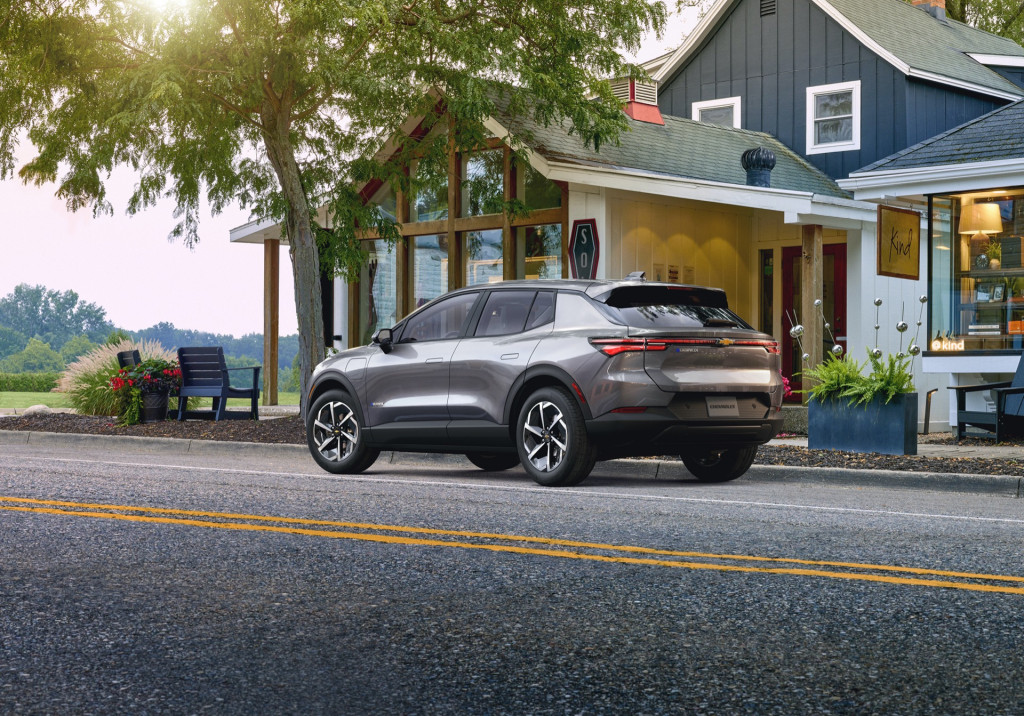
2024 Chevrolet Equinox EV
Ford has delayed one of its two EV battery plants to be located in Kentucky, citing lower-than-expected EV demand. While the announcement doesn’t affect the first plant, due to start making cells in 2025, or a battery plant at Blue Oval City in Tennessee, it suggests that Ford may be reeling back targets on some EVs—including, potentially, its upcoming Project T3 truck intended for “incredibly high volume.”
Toyota gave a strong indication on Tuesday that it plans to ramp up U.S. plug-in hybrid production—if not EV production itself—with $8 billion of new battery production investment in North Carolina. That brings the total planned investment in the facility, which is due to focus initially on hybrid batteries, to $13.9 billion.
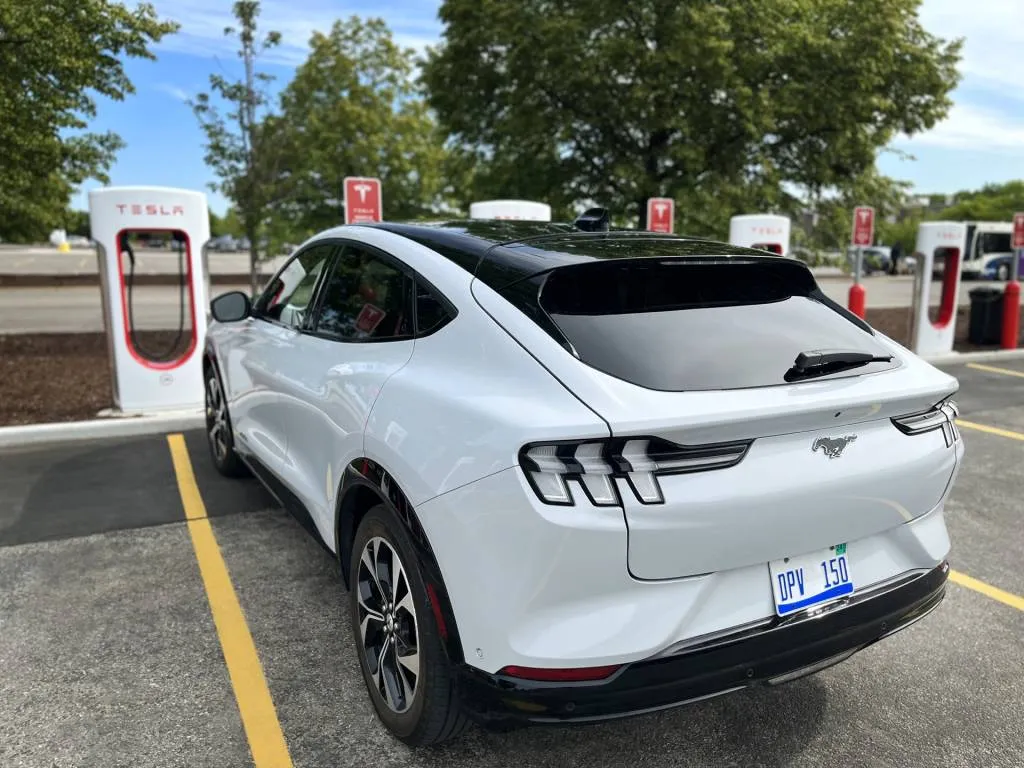
Ford Mustang Mach-E at Tesla Supercharger
With the addition of Francis Energy, Blink, and Red E, Ford has expanded its Blue Oval Charging Network by 25%, to a total of 106,000 chargers that are accessible through a unified interface that aggregates connectors on a range of networks. It also confirmed that Tesla Supercharger V4 hardware will be added to the interface—timing still TBA.
Nissan is bullish on its own all-solid-state battery (ASSB) cells. It still sees the technology as being a potential game-changer for making big electric SUVs, pickups, and more viable—perhaps starting around 2028. And if all goes as planned, its solid-state EV batteries won’t need cooling.

Nissan Hyper Tourer concept
Hyundai is playing hardball with Tesla on price cuts. Late last week it revealed a big 2024 Hyundai Ioniq 6 price cut—of up to $4,100. The deepest discounts apply to the base SE Standard Range, now $38,615, while the 361-mile long-range SE starts at $43,565, representing a $3,050 price cut.
The 2020-2022 Chevy Bolt EV battery recall has evolved, and owners now face a new choice as part of a class-action lawsuit settlement and GM’s battery recall effort affecting these cars. If they install diagnostic software temporarily limiting their car to 80% of the original battery capacity (and range), they can get a $1,400 payment up front and might still get a new battery pack if it’s defective.
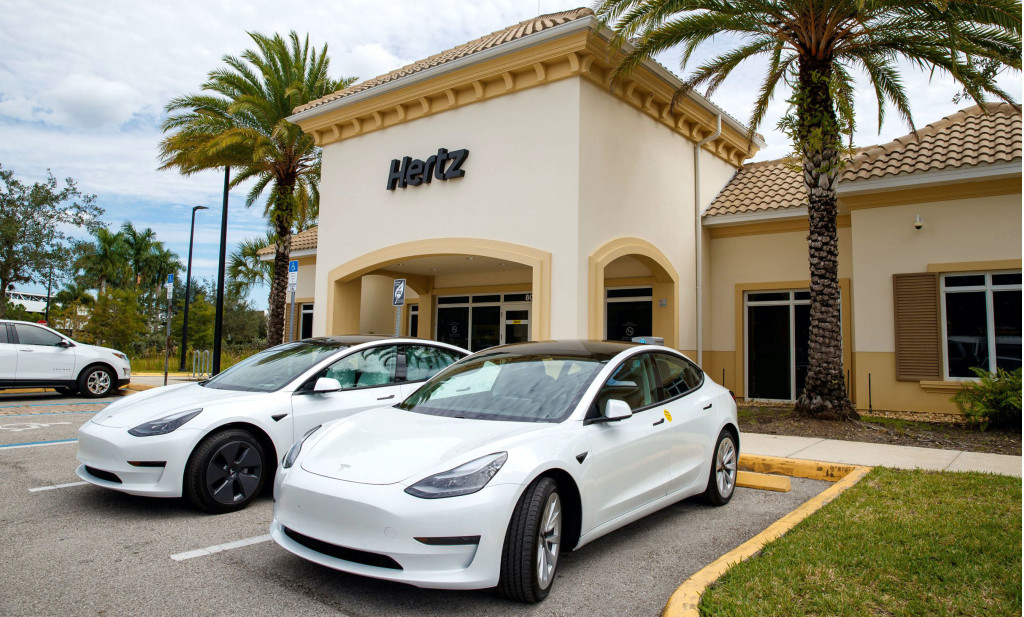
Tesla at Hertz
Hertz hasn’t yet taken delivery of the 100,000 Tesla vehicles it announced two years ago—or the massive orders of GM or Polestar EVs it made as part of a plan to electrify its rental fleet. That’s because of high EV collision repair costs, the company said. Tesla’s price swings haven’t helped either.
BMW is in the midst of a shift to its sixth-generation battery and propulsion tech—shifting to longer cylindrical batteries and a new chemistry of its own—and with it the German automaker is claiming Tesla will no longer have the lead in range or battery tech.
In 2025, Subaru will start adopting the Tesla NACS charge port for its American-market electric vehicles. Further, Subaru EVs will get Supercharger access that same year with the availability of a CCS adapter for current models like the Solterra, the company confirmed Wednesday.
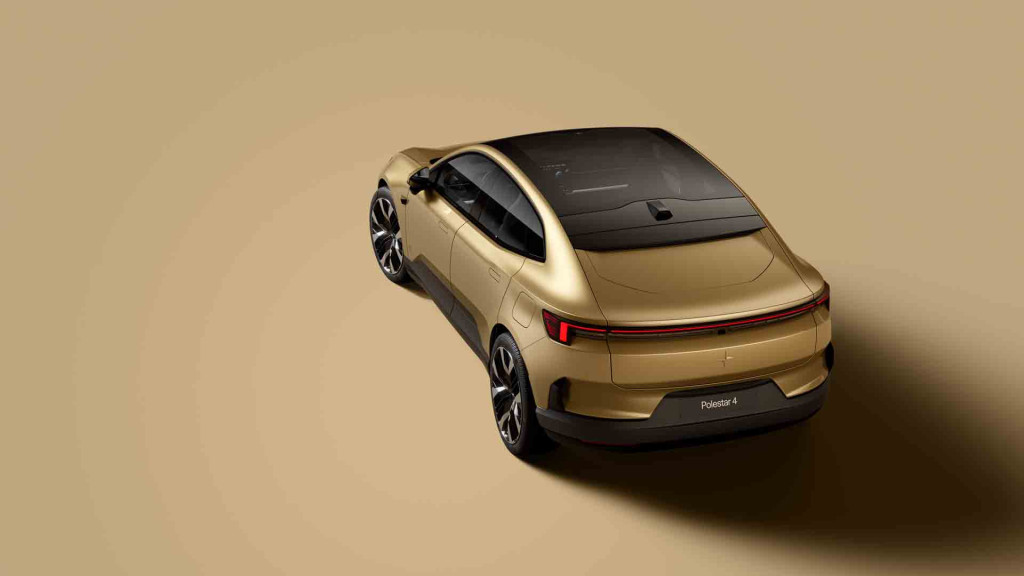
2025 Polestar 4
A life-cycle assessment released by Polestar suggests that the brand’s Polestar 4 has a lower carbon footprint than its Polestar 2 hatchback. That counters conventional guidance suggesting that SUVs have a bigger footprint, and it suggests some big gains in China-based green manufacturing and the efficiency of this upcoming EV.
In California, EV sales continue to rise according to the latest report from the state’s dealers. EVs represented 22.3% of vehicle sales in the Golden State in Q3, higher than the previous quarter and flying in the face of doomsday remarks from executives suggesting dwindling demand.
Massachusetts-based Factorial Energy announced last week the opening of a facility it claims will be the largest solid-state battery plant in the U.S. With support from Mercedes-Benz and Stellantis, among others, Factorial is pushing ahead with test cells that could bring a 50% energy density boost (and range boost) to EVs.
China’s Chery has revealed an EV concept inspired by tuna, for which it claims to have the world’s best aerodynamic efficiency—with a coefficient of drag of just 0.168.
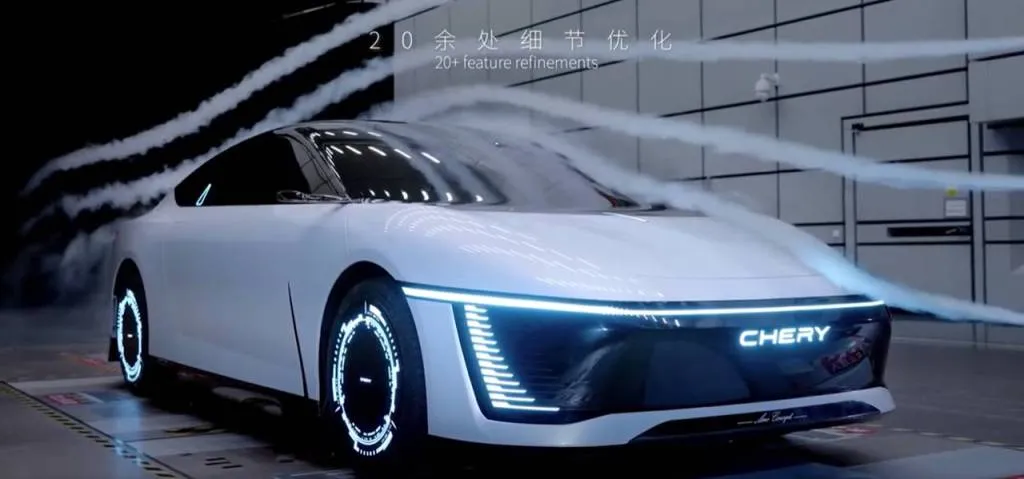
Chery EV concept claiming 0.168 Cd (Weibo screencap)
And do electric cars need to have four wheels? The Shane EV concept, revealed recently by the creator of the Hoverboard, questions that—potentially packing cabin space for five into a car driven by two in-wheel motors, giant side-by-side wheels, and a system that balances and shifts its center of gravity as needed. The car can potentially pivot far more easily than anything on four wheels, and regenerative damping could enhance efficiency.
_______________________________________













